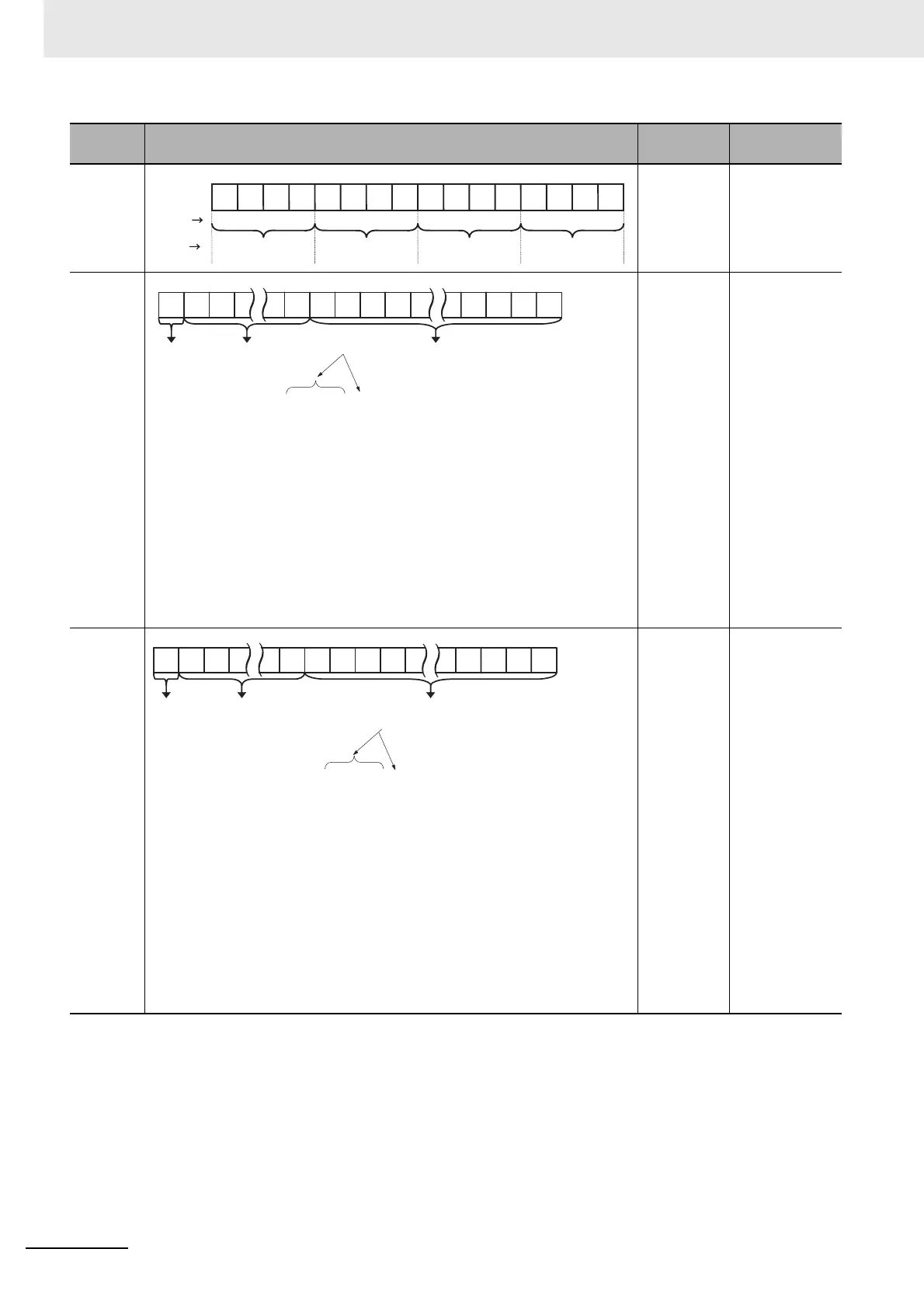5 Understanding Programming
5-78
CJ2 CPU Unit Software User’s Manual
BCD
(binary
coded
decimal)
#0 to #9999 #0000 to #9999
Single-
precision
floating-
point dec-
imal
This format conforms to IEEE754 standards for single-precision floating-point
data and is used only with instructions that convert or calculate floating-point
data. It can be used to set or monitor from the I/O memory Edit and Monitor
Screen on the CX-Programmer. As such, users do not need to know this for-
mat although they do need to know that the formatting takes up two words.
--- ---
Double-
precision
floating-
point dec-
imal
This format conforms to IEEE 754 standards for double-precision floating-
point data and is used only with instructions that convert or calculate floating-
point data. It can be used to set or monitor from the I/O memory Edit and Mon-
itor Screen on the CX-Programmer. As such, users do not need to know this
format although they do need to know that the formatting takes up four words.
--- ---
Data type Data format Decimal
4-digit hexa-
decimal
1415 13 1112 10 8976 35210
2
2
2
3
2
1
2
3
2
0
2
2
2
0
2
1
2
3
2
2
2
3
2
1
2
2
2
1
2
0
4
2
0
Decimal
0 to 9
0 to 9
0 to 9
Binary
0 to 9
30 31 29 23 2122 20 19 2 1 0
Sign of
mantissa
Exponent
Mantissa
× 1.[Mantissa] × 2
Exponent
Sign (bit 31)
Mantissa
Exponent
1: negative or 0: positive
The 23 bits from bit 00 to bit 22 contain the mantissa,
i.e., the portion below the decimal point in 1.@@@@.....,
in binary.
The 8 bits from bit 23 to bit 30 contain the exponent.
The exponent is expressed in binary as 127 plus n in
2
n
.
Value = (−1)
Sign
Binary
62 63 52 51 0
Exponent Mantissa
× 1.[Mantissa] × 2
Exponent
Sign (bit 63)
Mantissa
Exponent
Sign
Value = (−1)
Sign of
mantissa
Binary
1: negative or 0: positive
The 52 bits from bit 00 to bit 51 contain the mantissa,
i.e., the portion below the decimal point in 1.@@@@.....,
in binary.
The 11 bits from bit 52 to bit 62 contain the exponent
The exponent is expressed in binary as 1023 plus n
in 2
n
.
